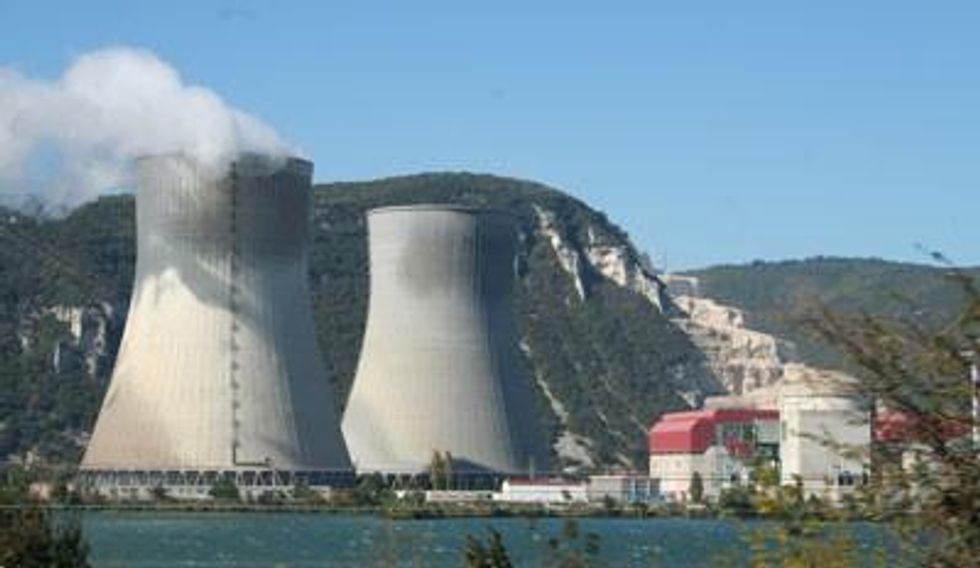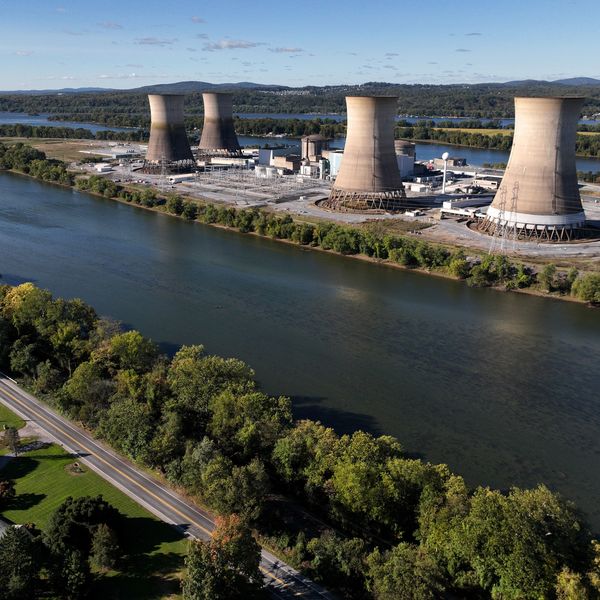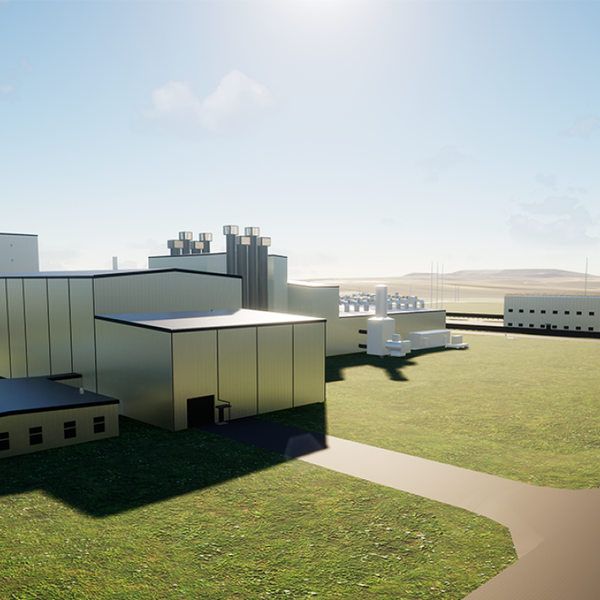French Scientists: Childhood Leukemia Spikes Near Nuclear Reactors
Jan 26, 2012
French researchers have confirmed that childhood leukemia rates are shockingly elevated among children living near nuclear power reactors.

The "International Journal of Cancer" has published in January a scientific study establishing a clear correlation between the frequency of acute childhood leukemia and proximity to nuclear power stations. The paper is titled, "Childhood leukemia around French nuclear power plants - the Geocap study, 2002-2007."
This devastating report promises to do for France what a set of 2008 reports did for Germany -- which recently legislated a total phase-out of all its power reactors by 2022 (sooner if the Greens get their way).
The French epidemiology -- conducted by a team from the Institut National de la Sante et de la Recherche Medicale, or INSERM, the Institut de Radioprotection et de Surete Nucleaire, or IRSN, and the National Register of hematological diseases of children in Villejuif, outside Paris -- demonstrates during the period from 2002-2007 in France the doubling of childhood leukemia incidence: the increase is up to 2.2 among children under age five.
The researchers note that they found no mechanistic proof of cause and effect, but could identify no other environmental factor that could produce the excess cancers.
Without getting overly technical, the case-control study included the 2,753 cases of acute leukemia diagnosed in mainland France over 2002-2007, and 30,000 contemporaneous population "controls." The children's last addresses were geo-coded and located around France's 19 nuclear power stations, which operate 54 separate reactors. The study used distance to the reactors and a dose-based geographic zoning, based on the estimated dose to bone marrow related to the reactors' gaseous discharges.
All operating reactors routinely spew radioactive gases like xenon, krypton and the radioactive form of hydrogen known as tritium. These gases are allowed to be released under licenses issued by federal government agencies. Allowable limits on these radioactive poisons were suggested to governments and regulatory agencies by the giant utilities that own the reactors and by reactor operators themselves. This is because their reactors can't even function without regularly releasing radioactive liquids and gases, releases required to control pressure, temperature and vibrations inside the gigantic systems. (See: "Routine Radioactive Releases from Nuclear Power Plants in the United States: What Are the Dangers?" (pdf) from BeyondNuclear.org, 2009)
In Germany, results of the 2008 KiKK studies -- a German acronym for Childhood Cancer in the Vicinity of Nuclear Power Plants -- were published in both the International Journal of Cancer (Vol. 122) and the European Journal of Cancer (Vol. 44). These 25-year-long studies found higher incidences of cancers and a stronger association with reactor installations than all previous reports.
The main findings were a 60 percent increase in solid cancers and a 117 percent increase in leukemia among young children living near all 16 large German nuclear facilities between 1980 and 2003. These shocking studies -- along with persistent radioactive contamination of Germany from the Chernobyl catastrophe -- are largely responsible for depth and breadth of anti-nuclear public opinion all across Germany.
Similar leukemia spikes have been found around U.S. reactors (European Journal of Cancer Care, Vol. 16, 2007). Researchers at the Medical University of South Carolina analyzed 17 research papers covering 136 reactor sites in the UK, Canada, France, the U.S., Germany, Japan and Spain. The incidence of leukemia in children under age 9 living close to the sites showed an increase of 14 to 21 percent, while death rates from the disease were raised by 5 to 24 percent, depending on their proximity to the nuclear facilities.
When the U.S. public owns up to the dangers of nuclear power, we too can get around to its replacement and phase-out.
An Urgent Message From Our Co-Founder
Dear Common Dreams reader, The U.S. is on a fast track to authoritarianism like nothing I've ever seen. Meanwhile, corporate news outlets are utterly capitulating to Trump, twisting their coverage to avoid drawing his ire while lining up to stuff cash in his pockets. That's why I believe that Common Dreams is doing the best and most consequential reporting that we've ever done. Our small but mighty team is a progressive reporting powerhouse, covering the news every day that the corporate media never will. Our mission has always been simple: To inform. To inspire. And to ignite change for the common good. Now here's the key piece that I want all our readers to understand: None of this would be possible without your financial support. That's not just some fundraising cliche. It's the absolute and literal truth. We don't accept corporate advertising and never will. We don't have a paywall because we don't think people should be blocked from critical news based on their ability to pay. Everything we do is funded by the donations of readers like you. Will you donate now to help power the nonprofit, independent reporting of Common Dreams? Thank you for being a vital member of our community. Together, we can keep independent journalism alive when it’s needed most. - Craig Brown, Co-founder |
Our work is licensed under Creative Commons (CC BY-NC-ND 3.0). Feel free to republish and share widely.
John Laforge
John LaForge is Co-director of Nukewatch, a peace and environmental justice group in Wisconsin, and is co-editor with Arianne Peterson of Nuclear Heartland, Revised: A Guide to the 450 Land-Based Missiles of the United States.
French researchers have confirmed that childhood leukemia rates are shockingly elevated among children living near nuclear power reactors.

The "International Journal of Cancer" has published in January a scientific study establishing a clear correlation between the frequency of acute childhood leukemia and proximity to nuclear power stations. The paper is titled, "Childhood leukemia around French nuclear power plants - the Geocap study, 2002-2007."
This devastating report promises to do for France what a set of 2008 reports did for Germany -- which recently legislated a total phase-out of all its power reactors by 2022 (sooner if the Greens get their way).
The French epidemiology -- conducted by a team from the Institut National de la Sante et de la Recherche Medicale, or INSERM, the Institut de Radioprotection et de Surete Nucleaire, or IRSN, and the National Register of hematological diseases of children in Villejuif, outside Paris -- demonstrates during the period from 2002-2007 in France the doubling of childhood leukemia incidence: the increase is up to 2.2 among children under age five.
The researchers note that they found no mechanistic proof of cause and effect, but could identify no other environmental factor that could produce the excess cancers.
Without getting overly technical, the case-control study included the 2,753 cases of acute leukemia diagnosed in mainland France over 2002-2007, and 30,000 contemporaneous population "controls." The children's last addresses were geo-coded and located around France's 19 nuclear power stations, which operate 54 separate reactors. The study used distance to the reactors and a dose-based geographic zoning, based on the estimated dose to bone marrow related to the reactors' gaseous discharges.
All operating reactors routinely spew radioactive gases like xenon, krypton and the radioactive form of hydrogen known as tritium. These gases are allowed to be released under licenses issued by federal government agencies. Allowable limits on these radioactive poisons were suggested to governments and regulatory agencies by the giant utilities that own the reactors and by reactor operators themselves. This is because their reactors can't even function without regularly releasing radioactive liquids and gases, releases required to control pressure, temperature and vibrations inside the gigantic systems. (See: "Routine Radioactive Releases from Nuclear Power Plants in the United States: What Are the Dangers?" (pdf) from BeyondNuclear.org, 2009)
In Germany, results of the 2008 KiKK studies -- a German acronym for Childhood Cancer in the Vicinity of Nuclear Power Plants -- were published in both the International Journal of Cancer (Vol. 122) and the European Journal of Cancer (Vol. 44). These 25-year-long studies found higher incidences of cancers and a stronger association with reactor installations than all previous reports.
The main findings were a 60 percent increase in solid cancers and a 117 percent increase in leukemia among young children living near all 16 large German nuclear facilities between 1980 and 2003. These shocking studies -- along with persistent radioactive contamination of Germany from the Chernobyl catastrophe -- are largely responsible for depth and breadth of anti-nuclear public opinion all across Germany.
Similar leukemia spikes have been found around U.S. reactors (European Journal of Cancer Care, Vol. 16, 2007). Researchers at the Medical University of South Carolina analyzed 17 research papers covering 136 reactor sites in the UK, Canada, France, the U.S., Germany, Japan and Spain. The incidence of leukemia in children under age 9 living close to the sites showed an increase of 14 to 21 percent, while death rates from the disease were raised by 5 to 24 percent, depending on their proximity to the nuclear facilities.
When the U.S. public owns up to the dangers of nuclear power, we too can get around to its replacement and phase-out.
John Laforge
John LaForge is Co-director of Nukewatch, a peace and environmental justice group in Wisconsin, and is co-editor with Arianne Peterson of Nuclear Heartland, Revised: A Guide to the 450 Land-Based Missiles of the United States.
French researchers have confirmed that childhood leukemia rates are shockingly elevated among children living near nuclear power reactors.

The "International Journal of Cancer" has published in January a scientific study establishing a clear correlation between the frequency of acute childhood leukemia and proximity to nuclear power stations. The paper is titled, "Childhood leukemia around French nuclear power plants - the Geocap study, 2002-2007."
This devastating report promises to do for France what a set of 2008 reports did for Germany -- which recently legislated a total phase-out of all its power reactors by 2022 (sooner if the Greens get their way).
The French epidemiology -- conducted by a team from the Institut National de la Sante et de la Recherche Medicale, or INSERM, the Institut de Radioprotection et de Surete Nucleaire, or IRSN, and the National Register of hematological diseases of children in Villejuif, outside Paris -- demonstrates during the period from 2002-2007 in France the doubling of childhood leukemia incidence: the increase is up to 2.2 among children under age five.
The researchers note that they found no mechanistic proof of cause and effect, but could identify no other environmental factor that could produce the excess cancers.
Without getting overly technical, the case-control study included the 2,753 cases of acute leukemia diagnosed in mainland France over 2002-2007, and 30,000 contemporaneous population "controls." The children's last addresses were geo-coded and located around France's 19 nuclear power stations, which operate 54 separate reactors. The study used distance to the reactors and a dose-based geographic zoning, based on the estimated dose to bone marrow related to the reactors' gaseous discharges.
All operating reactors routinely spew radioactive gases like xenon, krypton and the radioactive form of hydrogen known as tritium. These gases are allowed to be released under licenses issued by federal government agencies. Allowable limits on these radioactive poisons were suggested to governments and regulatory agencies by the giant utilities that own the reactors and by reactor operators themselves. This is because their reactors can't even function without regularly releasing radioactive liquids and gases, releases required to control pressure, temperature and vibrations inside the gigantic systems. (See: "Routine Radioactive Releases from Nuclear Power Plants in the United States: What Are the Dangers?" (pdf) from BeyondNuclear.org, 2009)
In Germany, results of the 2008 KiKK studies -- a German acronym for Childhood Cancer in the Vicinity of Nuclear Power Plants -- were published in both the International Journal of Cancer (Vol. 122) and the European Journal of Cancer (Vol. 44). These 25-year-long studies found higher incidences of cancers and a stronger association with reactor installations than all previous reports.
The main findings were a 60 percent increase in solid cancers and a 117 percent increase in leukemia among young children living near all 16 large German nuclear facilities between 1980 and 2003. These shocking studies -- along with persistent radioactive contamination of Germany from the Chernobyl catastrophe -- are largely responsible for depth and breadth of anti-nuclear public opinion all across Germany.
Similar leukemia spikes have been found around U.S. reactors (European Journal of Cancer Care, Vol. 16, 2007). Researchers at the Medical University of South Carolina analyzed 17 research papers covering 136 reactor sites in the UK, Canada, France, the U.S., Germany, Japan and Spain. The incidence of leukemia in children under age 9 living close to the sites showed an increase of 14 to 21 percent, while death rates from the disease were raised by 5 to 24 percent, depending on their proximity to the nuclear facilities.
When the U.S. public owns up to the dangers of nuclear power, we too can get around to its replacement and phase-out.
We've had enough. The 1% own and operate the corporate media. They are doing everything they can to defend the status quo, squash dissent and protect the wealthy and the powerful. The Common Dreams media model is different. We cover the news that matters to the 99%. Our mission? To inform. To inspire. To ignite change for the common good. How? Nonprofit. Independent. Reader-supported. Free to read. Free to republish. Free to share. With no advertising. No paywalls. No selling of your data. Thousands of small donations fund our newsroom and allow us to continue publishing. Can you chip in? We can't do it without you. Thank you.

